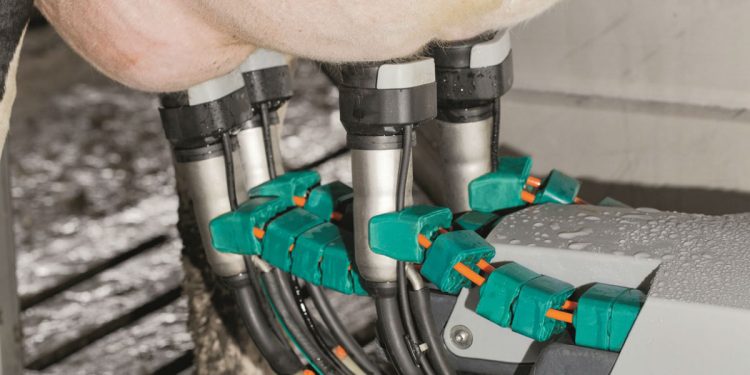
Small-scale dairy farming in India is facing an existential threat from the fall in milk prices even as big dairy pussyfoots into global markets
Maharashtra has agreed to the demand of protesting dairy farmers and raised the price of cow’s milk by Rs 5 per litre. Dairy farmers in Maharashtra had been unable to get more than Rs 19 per litre for cow’s milk. A litre of bottled water in comparison was priced at Rs 20. It will be some weeks before it is known whether dairy farmers are being paid accordingly. Meanwhile, dairy farmers in Himachal Pradesh are on the warpath demanding a hike in milk prices.
A media report quotes Babasaheb Mane from Mahuli village in Sangli, Maharashtra. “I used to make a profit of Rs 15,000 a month, but now I make a loss of Rs 9,000,” Babasaheb has been quoted as saying. He had been earning Rs 30,000 a month from his four cows last year. Today, he and his wife work as farm labourers to keep the house running.
Babasaheb is not the only farmer in such dire straits; lakhs of farmers across northern India have seen such reversal of fortunes, particularly over the past two years. Since nearly 70 per cent of dairy production is in the hands of women, it is the livelihood security of millions of economically-weaker farmers that is at stake. It is no wonder that dairy farmers are angry.
The farmers are protesting at a time when the dairy industry globally is struggling to survive. For four years, dairy farmers have grappled with low prices, and projections are that the prices will fall further over the next few years. In the United States, more than 17,000 small dairy farms have closed down in the past decade. In England, more than 1,000 dairy farms have closed down in the past three years. In Australia, even the biggest diary cooperative giant, Murray Goulburn, sold to Saputo in Canada.
In New Zealand, known for an efficient dairy industry, farmers continue to make losses. While small dairy farms are collapsing in almost all countries, mega dairy farms are rising. This follows what a former US Agricultural Secretary, Earl Butz, had once remarked: “Get big or get out.”
While small producers are being driven out, modern agricultural policy is shifting to favour these large producers. In America, Walmart announced the construction of its own dairy plant. According to industry projections, Walmart will expand its network in America, edging small dairy farms out.
In India, the French dairy giant Danone is slowly moving in. With the government approving the setting up of cattle farms on industrial scale, it wouldn’t be surprising if more big players enter the dairy market. The world is awash with milk. Producers around the world are engaged in a vicious cycle of overproduction, which has forced prices to crash. In India, milk prices have fallen by 20 to 30 per cent for farmers, while production has steadily gone up.
With an output of 165.4 million tonnes in 2016-17, India was the biggest producer of milk in the world. Europe, too, has seen overproduction with withdrawal of the milk quota system in 2015, resulting in price crash and shrinkage in profit margins. The way the price of Skimmed Milk Powder (SMP) has declined internationally indicates overproduction.
In 2013, international prices of milk powder ranged between $ 5,000 and $ 5,200 per tonne, which has now come down to as low as $ 2,000 per tonne. In India, which has seen steady increase in the production of milk powder during the same period, it now is faced with an unprecedented glut. Milk powder prices have come down from Rs240-250 per kg in 2014 to about Rs 136 per kg now.
The unmanageable glut is forcing the dairy industry to cut milk procurement. Several dairies in Maharashtra had earlier announced a hiatus in procurement of cow’s milk. Gujarat Cooperative Milk Marketing Federation had cut back on milk collection from twice a day to once daily. The situation is no better in Punjab. Dairies are reported to be saddled with stock of 2-lakh tonnes of SMP. By end of November, SMP stocks will rise to about 3 lakh tonnes.
But why can’t the dairy industry step in to make milk available at Rs 5 per glass (of 200 ml) at railway stations? Will it not reduce the burden of carrying over massive stocks of milk powder? Why can’t it seek introduction of milk in mid-day meal programmes in schools?
While some economists want to develop the Indian dairy sector on globally competitive lines, which doesn’t make any economic sense given the severity of milk crisis the rich and developed countries are faced with, the best solution has been offered by BM Vyas, a former managing director of Gujarat Cooperative Milk Marketing Federation.
He says that instead of getting into the vicious cycle of competitiveness, which would eventually pull the prices further down, the best option would be for the country to demonstrate statesmanship by way of gifting SMP to needy countries such as Nepal, Bangladesh, Sri Lanka, Bhutan or even African countries, allowing them to build a milk revolution on the lines of Operation Flood in India. After all, India, too, had built its milk revolution from the gift of butter oil it had received from the European Union.
At the same time, India should provide an economic package to its dairy farmers reeling under distress. As in Germany, which recently provided 100 million euros to its small dairy farmers as a short-term measure, India, too, needs to announce a bailout package of at least Rs 50,000 crore to its small dairy producers.
The writer is a food and trade policy analyst.







































